1. 引言
本文将介绍常见的网络拓扑结构,包括它们的定义、优缺点及典型应用场景。网络拓扑是构建和管理网络的基础,理解不同拓扑的特点,有助于我们在实际项目中做出更合适的技术选型。
2. 什么是网络拓扑?
网络拓扑是指网络中设备之间的物理或逻辑连接方式。它决定了数据在网络中的传输路径和设备之间的交互关系。拓扑结构直接影响网络的性能、安全性、可维护性、可扩展性等多个关键指标。常见的网络类型如局域网(LAN)、广域网(WAN)以及无线网络中,都会使用到不同的拓扑结构。
3. 总线型拓扑(Bus Topology)
总线型拓扑中,所有设备通过一条主干电缆连接,共享同一通信通道。
这种结构常见于小型网络(如早期的局域网),部署简单、成本低。但由于所有设备共享带宽,随着设备数量增加,网络性能会下降。此外,主干电缆一旦出现故障,整个网络将瘫痪。
✅优点:
- 简单易部署
- 成本低
- 扩展性尚可
❌缺点:
- 带宽受限
- 单点故障风险高(主干电缆故障)
- 不适合大规模网络
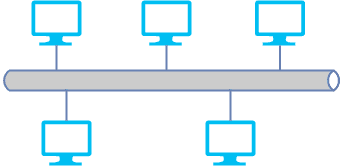
4. 环型拓扑(Ring Topology)
在环型拓扑中,每个设备连接两个相邻设备,形成一个闭合的环路。
该拓扑常见于FDDI、SONET等高安全性要求的企业级网络中。采用令牌传递机制,确保同一时间只有一个设备可以发送数据,从而减少冲突,提高传输效率。
✅优点:
- 安全性高
- 传输效率好
- 易于安装
❌缺点:
- 单点故障风险高(任一节点或线路故障都可能导致全网中断)
- 扩展困难
- 随着节点增加,带宽可能受限
⚠️踩坑提醒:环型拓扑对网络稳定性和设备可靠性要求高,不建议在设备频繁变动的环境中使用。
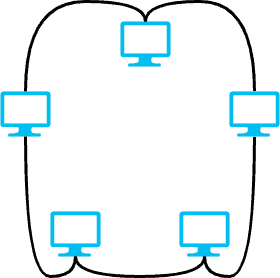
5. 星型拓扑(Star Topology)
星型拓扑中,所有设备都连接到一个中心节点(如交换机或集线器)。
这是目前最常见、最实用的拓扑结构,广泛用于企业网络和家庭网络中。中心节点负责数据转发,单个设备或链路故障不会影响其他设备。
✅优点:
- 高容错性(除中心节点外)
- 易于安装、管理和扩展
- 故障隔离性好
❌缺点:
- 中心节点为单点故障点
- 成本相对较高(需要更多线缆和交换设备)
⚠️踩坑提醒:选择高性能、高可靠性的中心交换机非常关键,否则将成为整个网络的瓶颈。
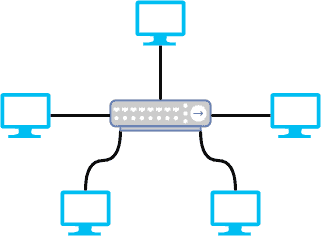
6. 树型拓扑(Tree Topology)
树型拓扑是总线型和星型拓扑的结合,结构呈树状层次分布。
它适合大型企业网络,尤其是需要分层管理的场景。每个子节点都可以连接多个子设备,形成分支结构,便于管理和扩展。
✅优点:
- 可扩展性强
- 层次清晰,易于管理
- 容错性较好(局部故障不影响整体)
❌缺点:
- 中心根节点为单点故障点
- 架构复杂,维护成本高
- 对中心节点端口数量有要求
⚠️踩坑提醒:树型拓扑结构复杂,设计时要充分考虑层级深度和节点容量,避免性能瓶颈。
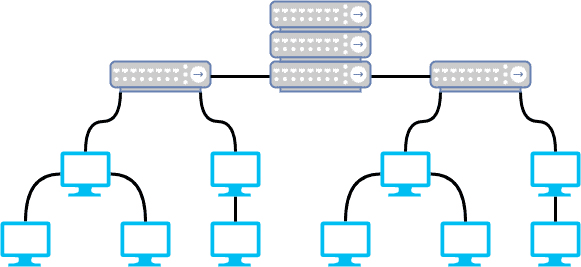
7. 网状拓扑(Mesh Topology)
网状拓扑中,每个设备都与其他多个设备直接连接,形成多个冗余路径。
这种结构常见于对高可用性要求极高的场景,如军事网络、数据中心骨干网等。由于设备间有多个通信路径,即使部分链路或节点故障,网络仍能正常运行。
✅优点:
- 高容错性
- 高带宽
- 安全性好
- 可扩展性强
❌缺点:
- 成本高
- 架构复杂
- 能耗大
⚠️踩坑提醒:虽然性能优越,但网状拓扑对设备、布线和管理要求极高,不适用于中小型网络。
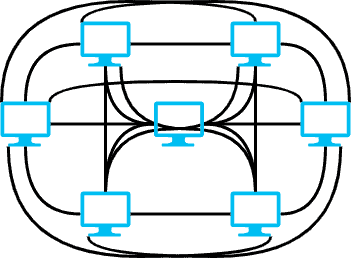
8. 总结
随着网络复杂度的提升,现代网络往往采用混合拓扑结构,结合多种拓扑的优点,以满足不同的业务需求和扩展要求。
| 拓扑类型 | 单点故障 | 扩展性 | 成本 | 适用场景 |
|---|---|---|---|---|
| 总线型 | 高 | 差 | 低 | 小型局域网 |
| 环型 | 高 | 一般 | 中 | 高安全性网络 |
| 星型 | 中 | 好 | 中 | 家庭/企业网络 |
| 树型 | 中 | 很好 | 较高 | 大型企业网络 |
| 网状 | 低 | 极好 | 高 | 核心骨干网、军用网络 |
在实际项目中,选择合适的拓扑结构应综合考虑网络规模、预算、安全性和可维护性等因素。希望本文能帮助你更好地理解和应用不同网络拓扑结构。